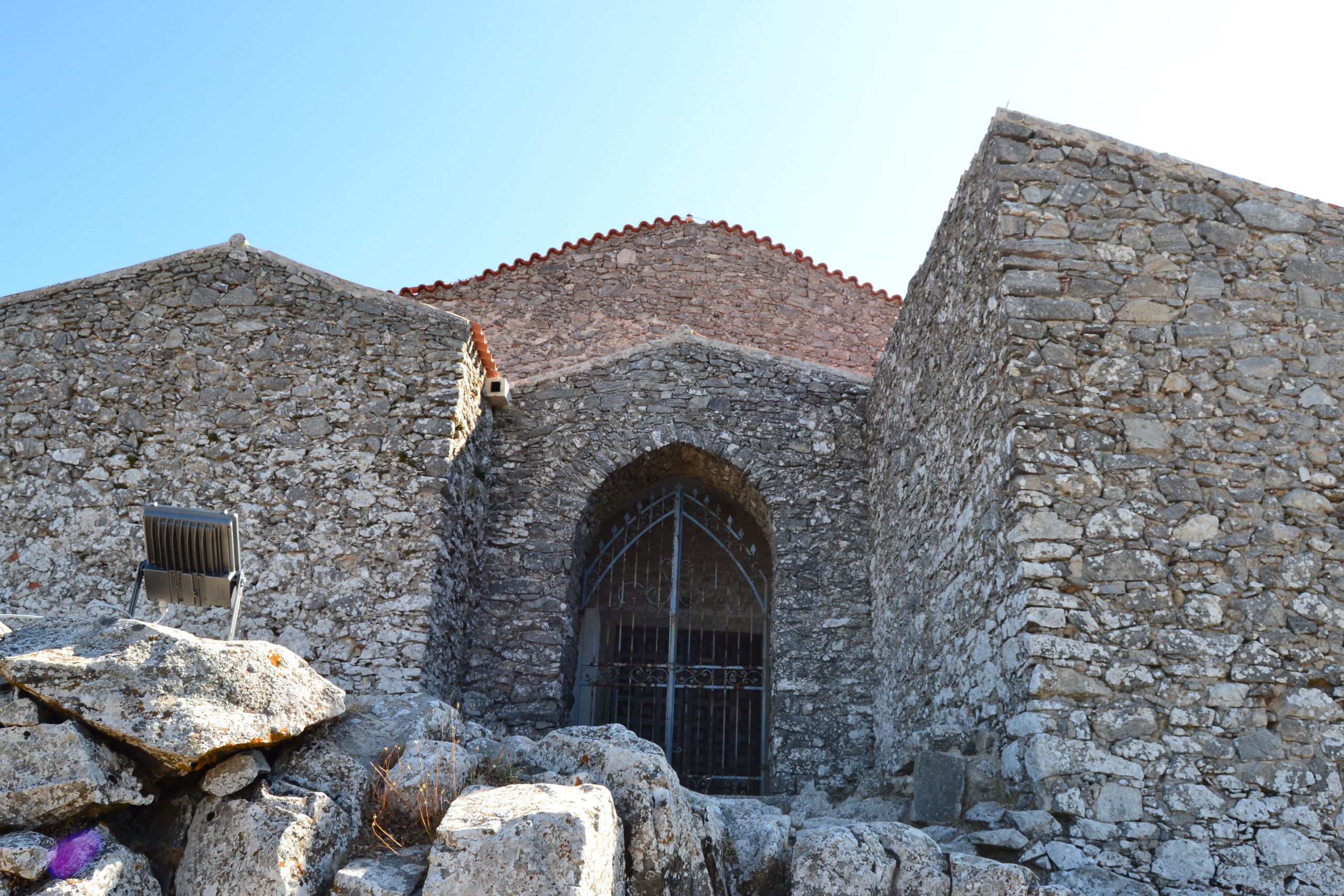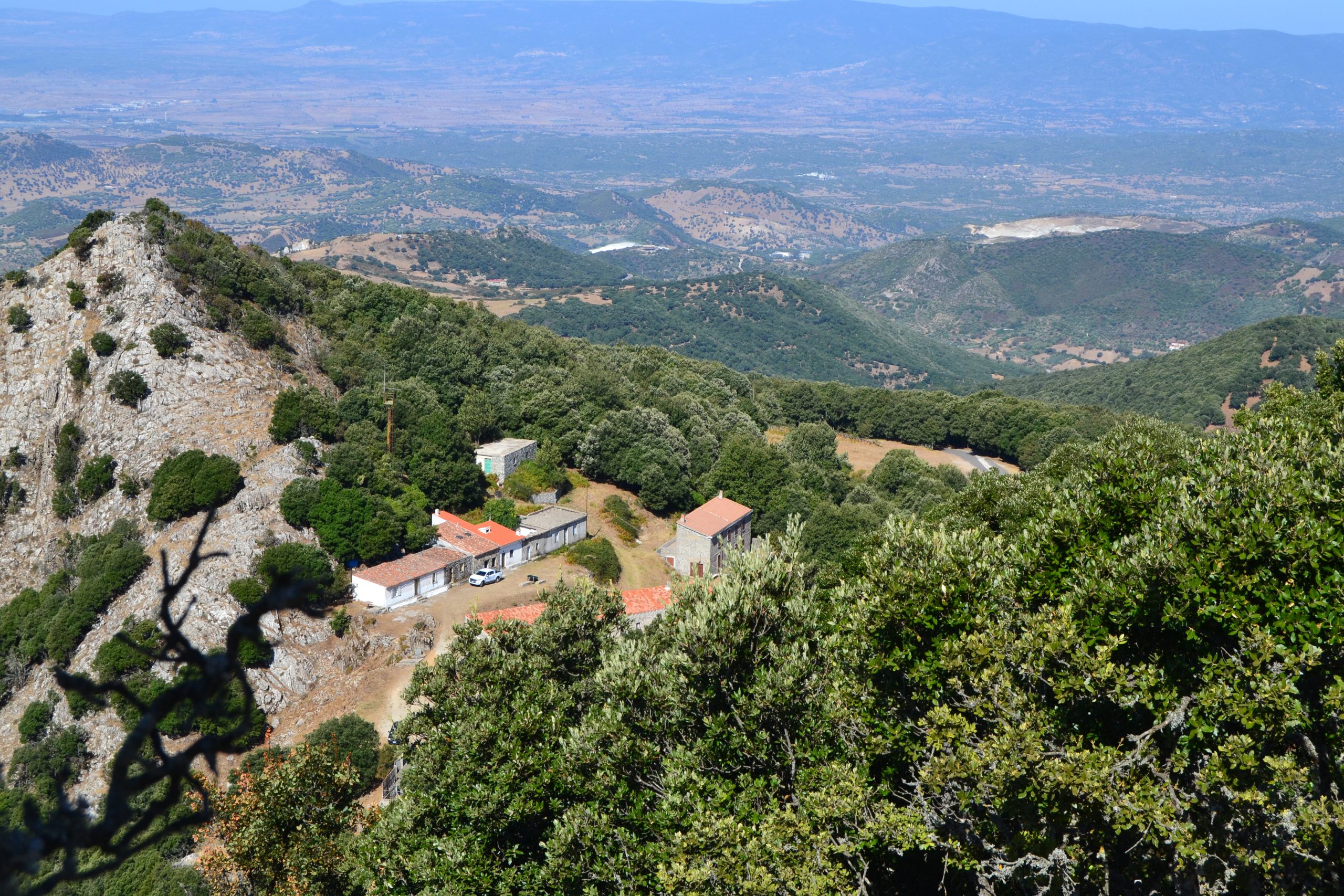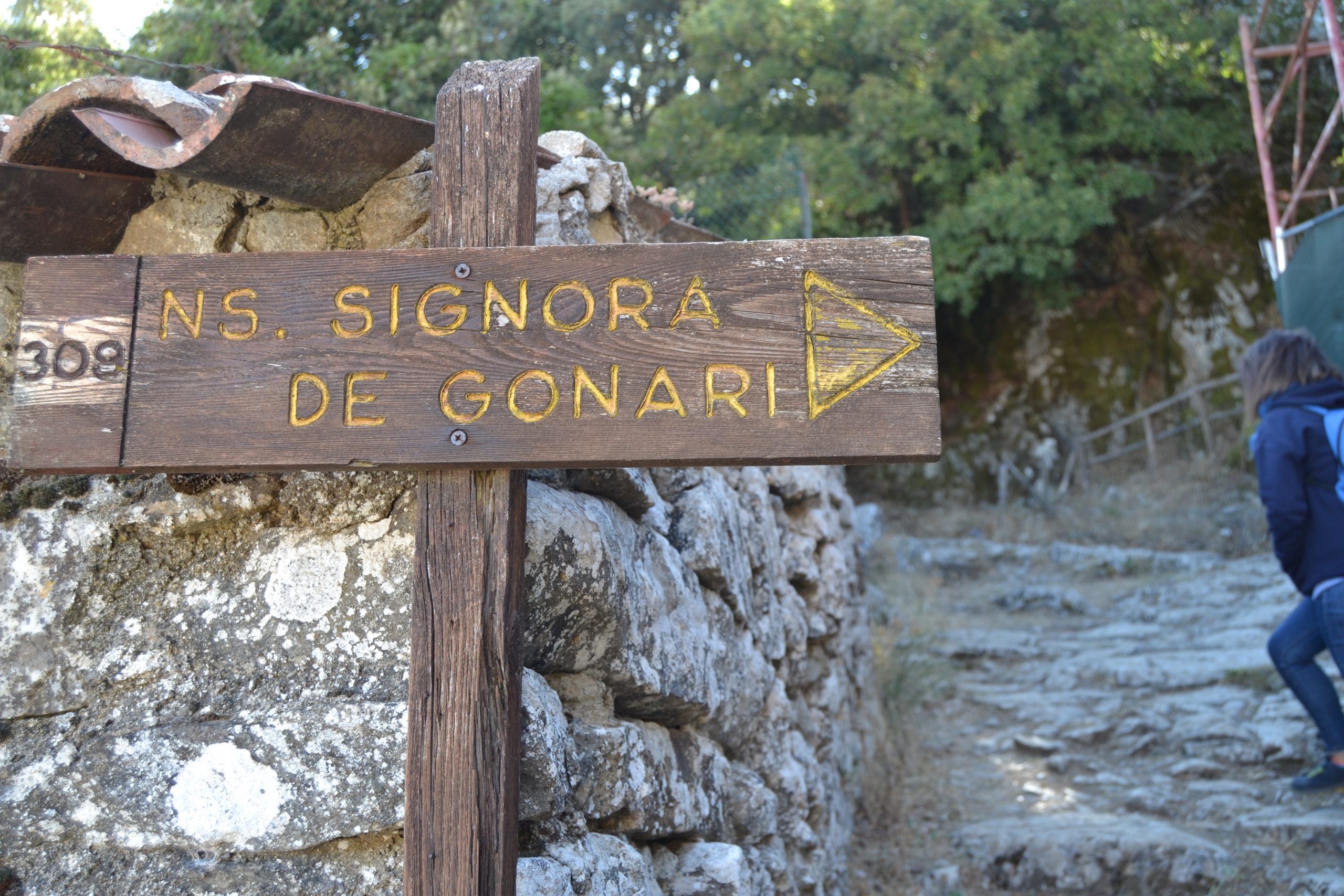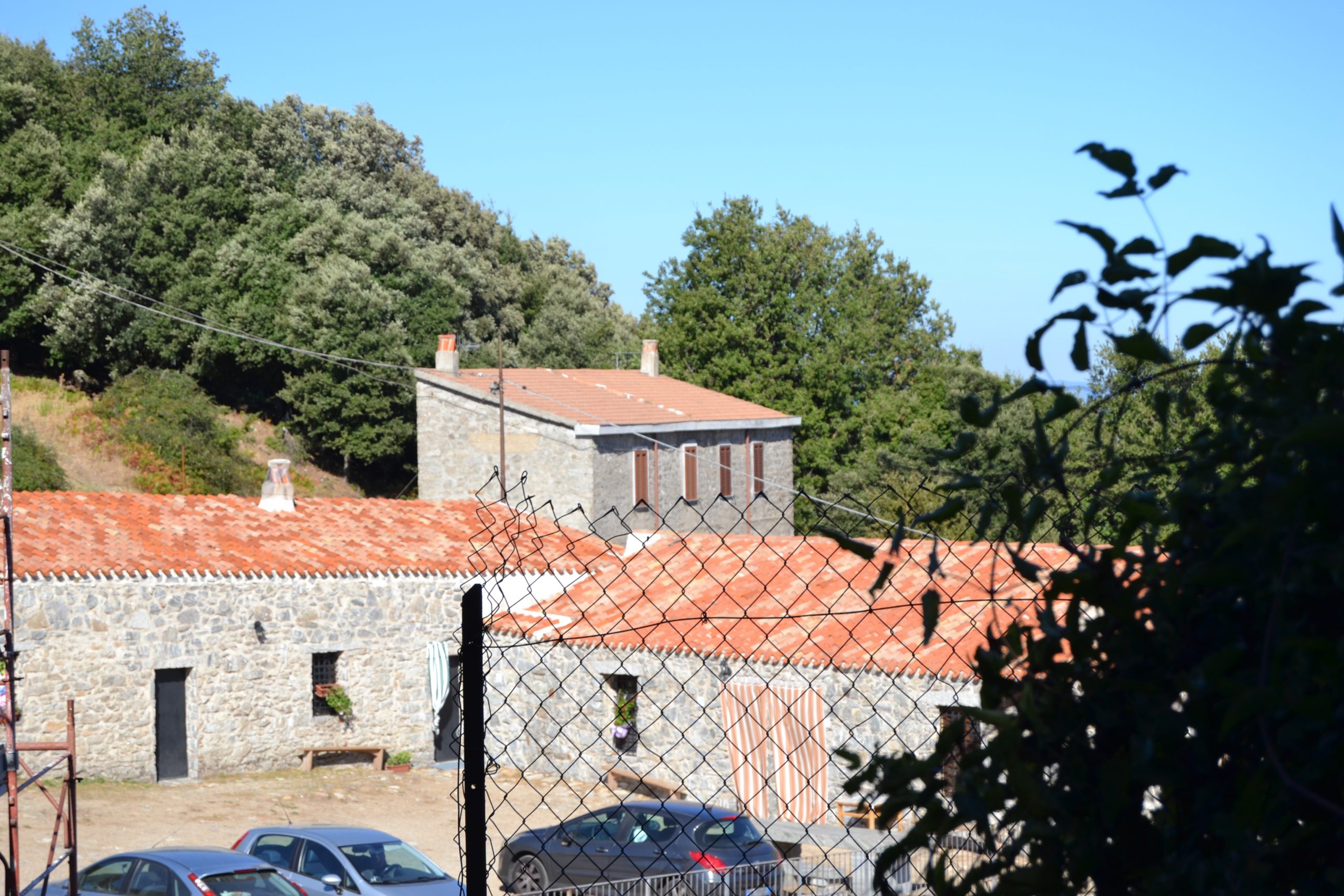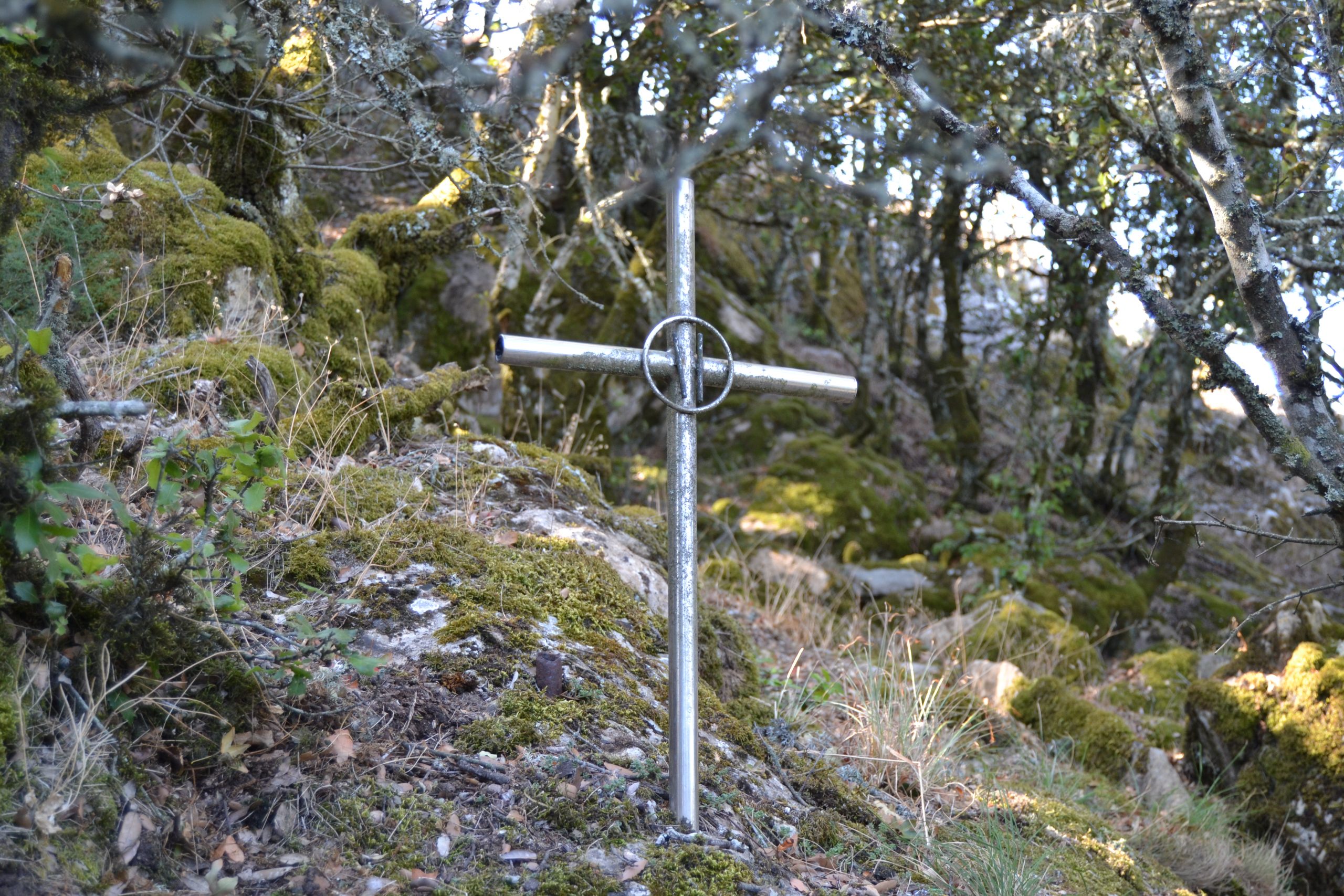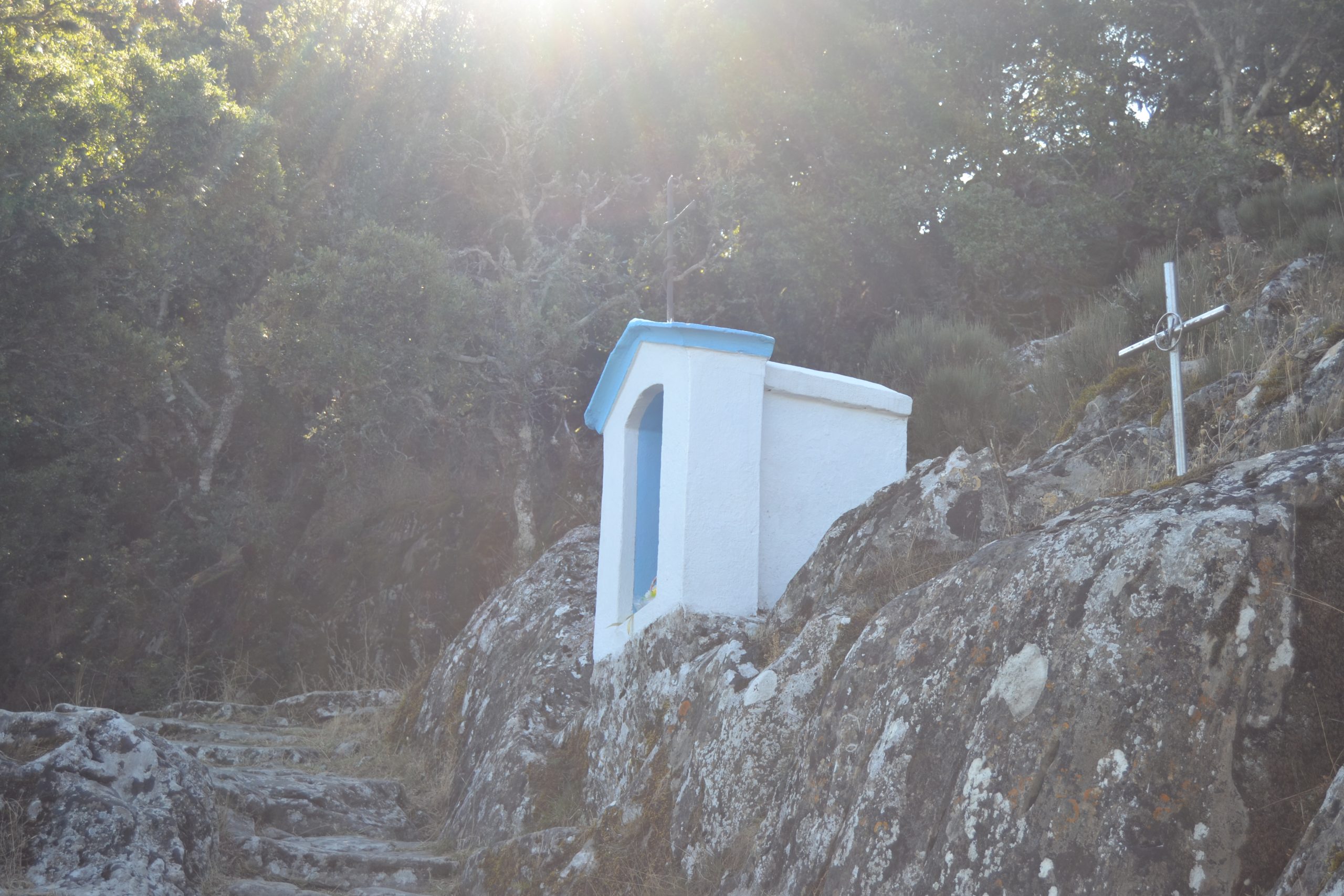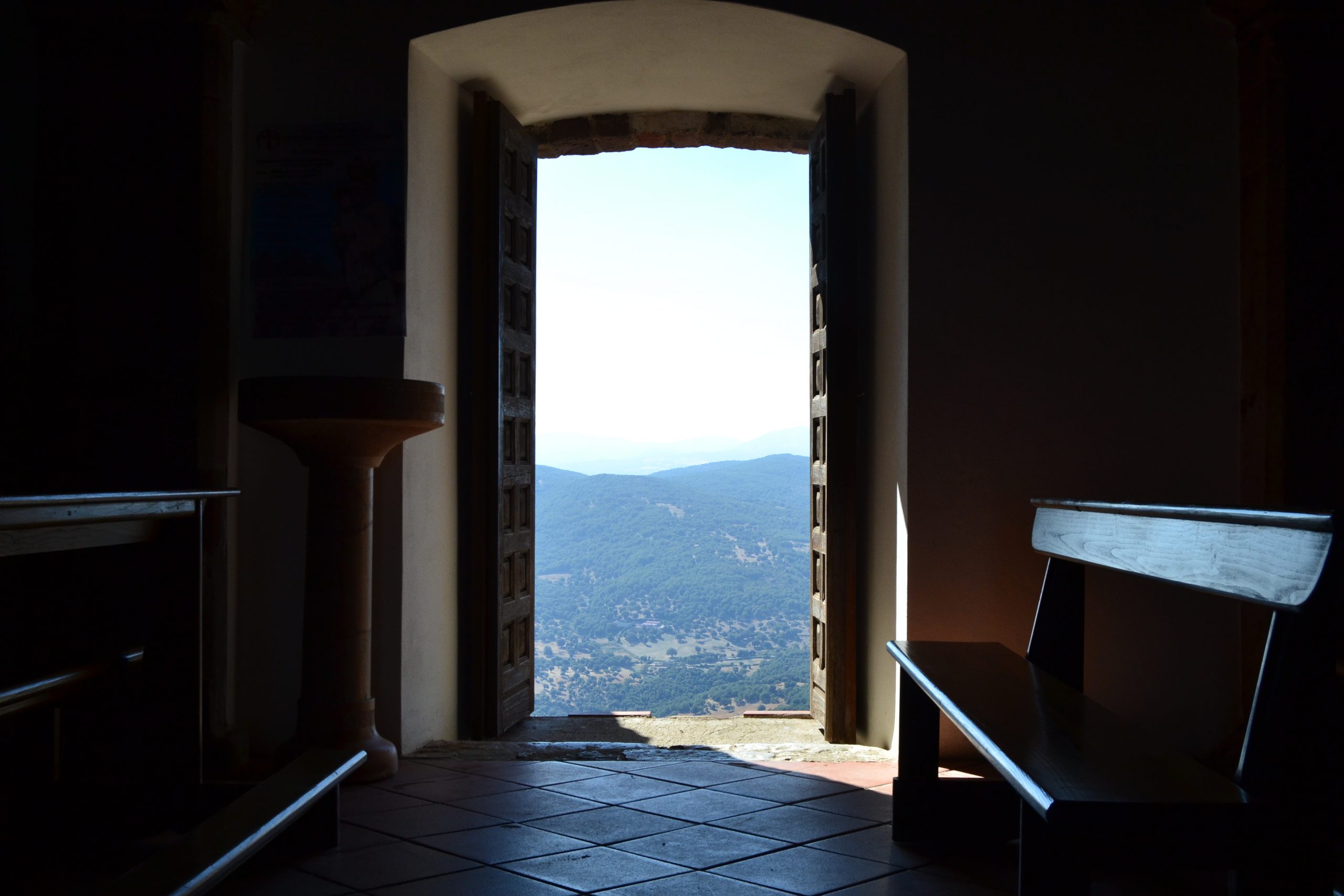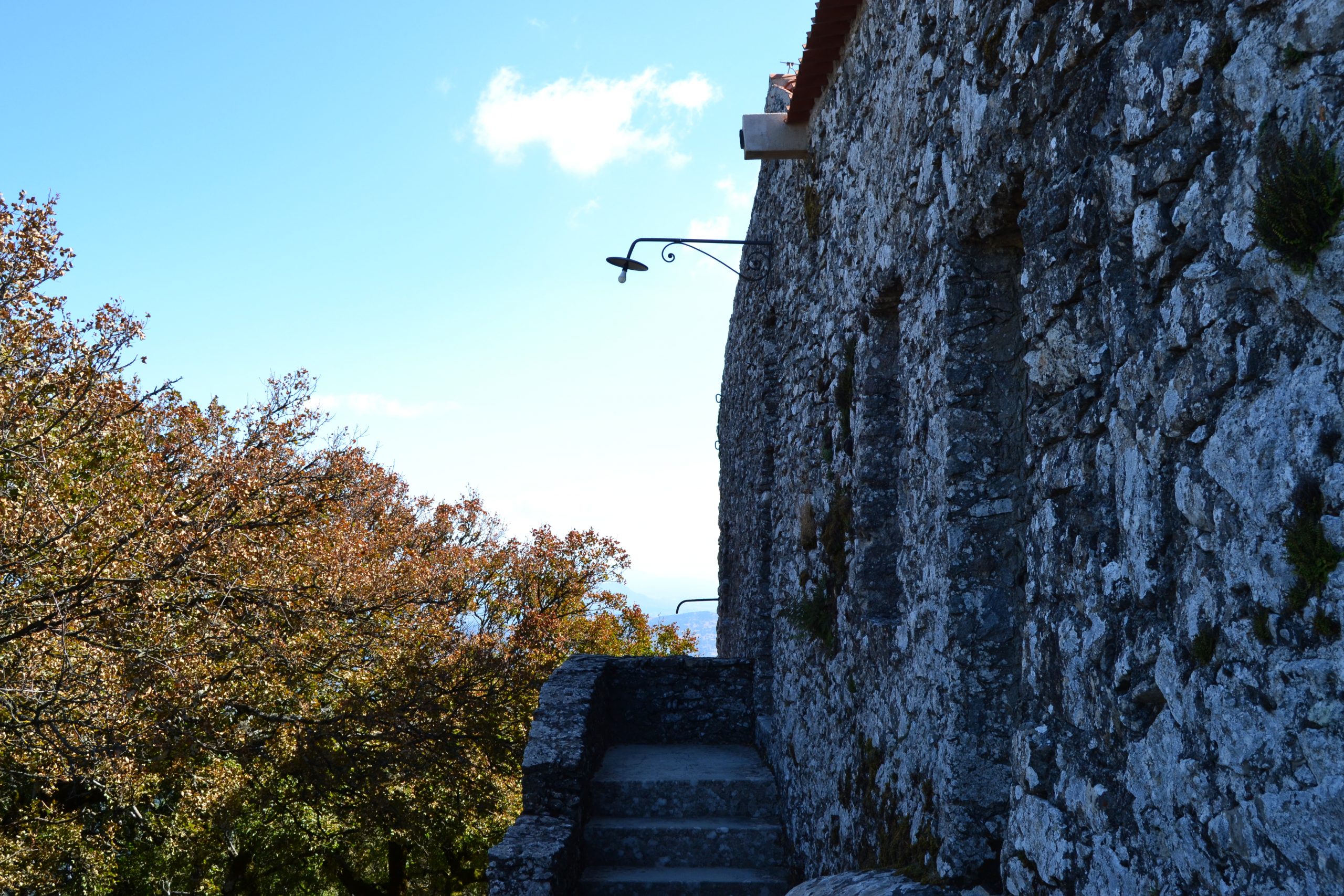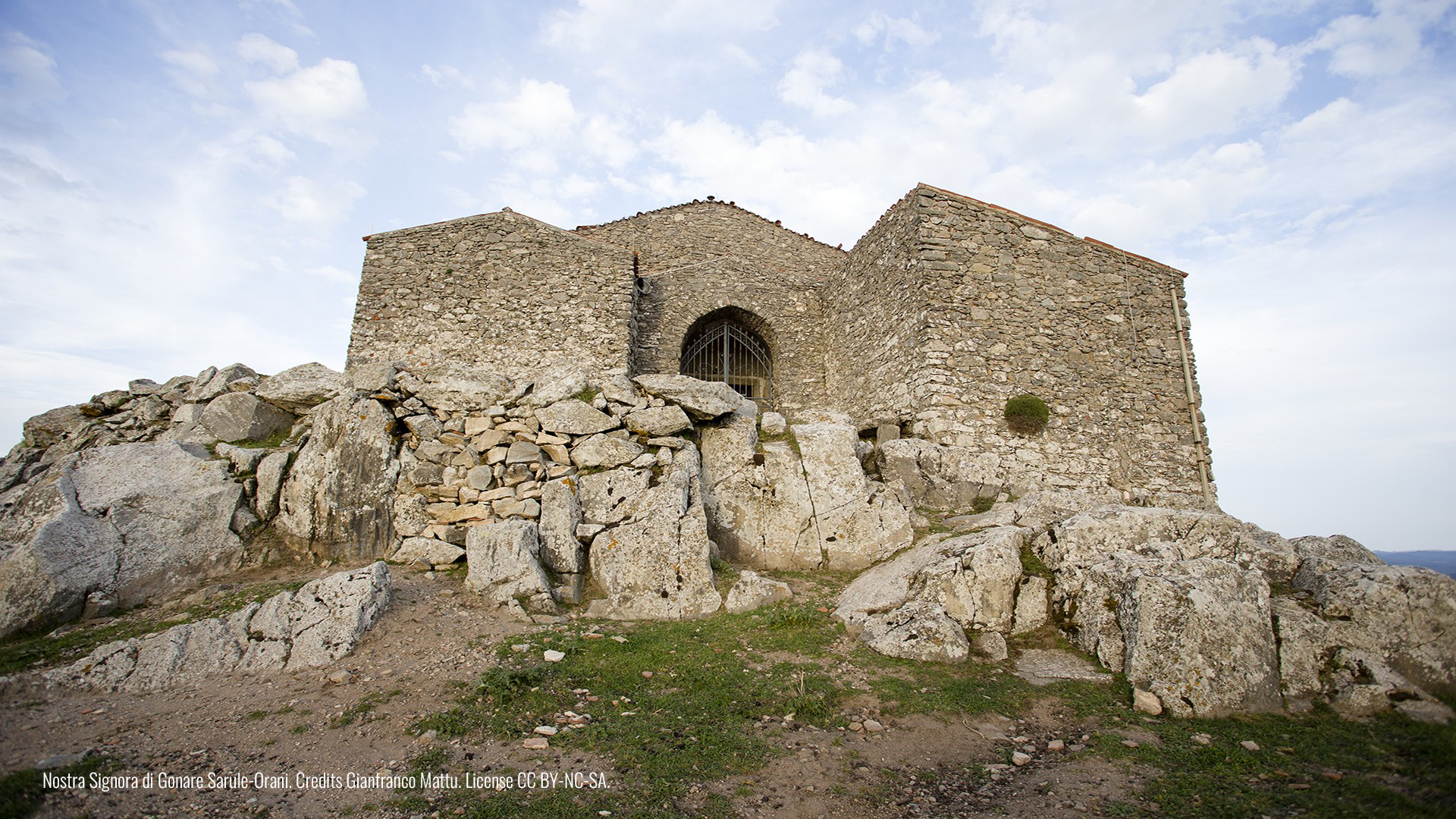“In September, they climbed Mount Gonare. The weather was once again bad, disrupted by violent storms: torrents of muddy water furrowed the slopes, beneath the wind-twisted woods, and the entire mountain trembled at the roar of thunder. Nevertheless, the faithful gathered; they ascended from all the winding paths, from all the winding roads, converging at the little church like blood flowing from the veins to the heart.
From a stone niche where Efix had taken refuge with his companions, he saw figures passing through the mist as if above the clouds, and the story of the Universal Deluge that the blind youth recounted seemed to him like their own story. Here, some patriarchs had been saved and sought refuge on the mountain: they ascended with their women and children, and they were sad and joyful at the same time because they had lost everything and saved everything.“
Translation of the provided text by Grazia Deledda, Canne al vento, ed. Ilisso, 2005, p.224
How to get there
By car
From Nuoro and Olbia, you can take the State Road 389var di Buddusò e del Correboi and take the Orani / Sarule exit, then continue to the Monte Gonare junction and turn left. At a fork, there are two roads, one going down and the other going up; take the one going up to reach your destination.
From Cagliari and Sassari, you can follow the E25/SS131 and take the exit towards Nuoro / Olbia on State Road 131 D.C.N. Continue for about 25 km until the Ottana exit. Take SP17 towards Sarule and Monte Gonare.
The Church of Our Lady of Gonare, located at an altitude of 1,100 meters on the homonymous mountain, is the highest in Sardinia and one of the most evocative Marian sanctuaries on the island. The mountain complex, which dominates central Sardinia, consists of three limestone peaks (Gonare, Gonareddu, and Punta Lotzori), surrounded by gray granites. On clear days, from the central peak where the church stands, you can see the sea to the east and west.
The sanctuary walls are shared by the parish of Sant’Andrea in Orani and the parish of San Michele Arcangelo in Sarule. The same applies to the ownership of the “cumbessias,” dwellings with porticos for the faithful during celebrations, with the oldest ones built next to the church and others further downstream. The panorama, especially on clear days, spans from the Gulf of Orosei to the Gulf of Oristano.
Historically, many generations of the faithful have invoked the Virgin Mary and ascended Mount Gonare. The ascent is carved into the rock and features some points of devotion: “su brazzolu” (the cradle), where the infant Jesus is believed to have been placed, and “s’imbaradorgiu,” a rock shaped like a seat with a small hollow next to it where the Virgin Mary is said to have rested her elbow.
The main religious celebrations are threefold:
On March 25th, the Feast of the Annunciation, when votive bread is distributed to pilgrims.
On the last Sunday of May, commemorating the coronation of the statue of the Virgin.
On September 8th, the ‘grand feast,’ formerly celebrated alternately by the respective parish priests of Orani and Sarule, but currently organized collaboratively. The celebration is preceded by a nine-day period of devotion, accompanied by “gosos” (devotional chants) and a Stations of the Cross along the mountain’s slopes.
Finally, in neighboring towns, one can visit the Nivola Museum in Orani, dedicated to the famous artist, and in Sarule, the historic church of San Bernardino.
Historical Overview
The origins of the sanctuary of Our Lady of Gonare are shrouded in legend. It is said that Gonario, Judge of Torres, returning from one of his many crusades in the year 1147, was caught in a storm off the Sardinian coast. Believing himself lost, he made a vow to the Madonna to build a sanctuary on the highest peak visible from there. That peak was Mount Dore. Gonario di Torres was saved from the shipwreck and kept his promise. Since then, the Sanctuary of Madonna di Gonare has dominated Barbagia, overlooking the sea on both sides (East and West).
In the surrounding area of the sanctuary, remnants of pagan cults still persist, dating back to pre or protohistoric times, linked to the worship and deification of water and stones. Some rocks near the sanctuary and the water from the spring are still venerated today. The Gonare sanctuary has been a place of worship and a destination for frequent pilgrimages since the 16th century. The statue depicting the Virgin is honored, resembling the appearance and bearing of a Roman matron, with the Infant Jesus in her arms holding a sphere in his right hand, while his left hand encircles his mother’s neck. A novena is celebrated with its own prayers, litanies, and “gosos” in honor of the Virgin. The religious function on the feast day, September 8, the Nativity of the Virgin, is preceded by the Via Crucis that winds along the mountain’s slopes. In the past, it was customary for pilgrims, especially penitents, to walk to the sanctuary barefoot with their hair untied.
The first historical evidence of the Madonna di Gonare cult dates back to 1341 when the rector of Gonare made a monetary contribution for the maintenance of the sanctuary. Another piece of information is found in the Chorographia Sardiniae (mid-16th century). The sanctuary’s bell dates back to 1587. A report from the bishop of Alghero in 1608 gives an account of the progress of the sanctuary’s construction, which concluded in 1619. The small sanctuary was expanded to its current size. It was consecrated in 1912, and in 1972, in the presence of 50,000 faithful, the solemn coronation of the Madonna di Gonare took place.
Over the years, Mount Gonare has been celebrated in the works of Grazia Deledda, in the poetic compositions of Sebastiano Satta, and in the paintings of artists Antonio Ballero and Mario Delitala. Its beauty has been exalted by these artists, contributing to its status as a place of worship and popular devotion.
The building, dating back to the early 17th century, hosts the celebrations held on March 25, the last Sunday of May, and September 8. These festivities are moments of great devotion for the faithful, who visit the sanctuary to pray to Our Lady of Gonare.
Historically, many generations of believers have invoked the Virgin Mary and climbed Mount Gonare. The ascent is carved into the rock and features some points of devotion: “su brazzolu” (the cradle), where the infant Jesus is believed to have been laid, and “s’imbaradorgiu,” a rock-shaped seat with a small pit next to it where the Virgin Mary is said to have rested her elbow.
The main religious celebrations are threefold:
March 25, the Feast of the Annunciation, when votive bread is distributed to pilgrims;
The last Sunday of May, the commemoration of the coronation of the Virgin statue;
September 8, the ‘big feast,’ formerly celebrated alternately by the respective parish priests of Orani and Sarule, but now jointly organized. The festival is preceded by a nine-day period of devotional songs (“gosos”) and a Via Crucis along the mountain’s flanks.
Finally, in the neighboring villages, you can visit the Nivola Museum in Orani, dedicated to the famous artist, and in Sarule, the historic church of San Bernardino.
1972 – The Year of Reconciliation
In 1971, the entire Diocese of Nuoro was mobilized to celebrate an extraordinary Marian year that began on May 1, 1971, and concluded on May 28, 1972, with the solemn coronation of the Blessed Virgin of Gonare as the Queen of Barbagia. The pelegrinatio took place with a three-day stop in each parish of the Diocese, featuring special events depending on the town and community.
This manifestation and the year of prayer and reflection were called by the bishop due to the serious situation in the territory. In the past ten years, there were 130 murders committed and 160 attempted, 128 robberies and 48 attempted, 34 kidnappings, 184 extortions, and more than 1,470 thefts suffered out of 6,523 attempted.
The church
The current appearance of the complex is the result of a reconstruction and expansion in 1618, which gave the ensemble the appearance of a fortress, thanks to its massive look typical of rustic architecture from that period. From the outside, the sanctuary appears hermetically closed, and its wall coverings, which form a unity, almost a continuation of the rock on which they are founded, give no hint of what is inside. The external structures of the “cumbessias” also contribute to this mimicry, as they lean against the church, making it impossible to perceive the presence of the central nave and the presbytery.
Mount Gonare, located in central Sardinia, is a mountainous elevation that consists of two cone-shaped peaks with a vertical axis, reaching respective heights of 1083 m (Monte Gonare) and 1045 m (Monte Gonareddu).
The geology of the mountain is characterized, in its higher parts, by Paleozoic crystalline schists and limestones, in an area of Sardinia predominantly composed of granite. The limestones show limited effects of karst processes, with the presence of some karstic springs and two small caves.
The massif is covered by chestnut, holm oak, and cork oak forests, extending downhill to 800 m. These are associated, discontinuously, with holm oaks, cork oaks, alders, and other tree species. The shrub vegetation includes species such as juniper, mastic, broom, rosemary, and myrtle. Herbaceous vegetation is rich and varied, with the presence of species such as astragalus, everlasting, ferns, orchids, peonies, and mountain roses.
The fauna of Mount Gonare is rich and varied, with the presence of numerous species of community interest and endemics, including the Sardinian tree frog, Sardinian partridge, and various species of bats.
Where to eat and where to stay
Around the sanctuary of Monte Gonare, you can experience the rich cultural and gastronomic heritage of the area. To fully enjoy it, you can find high-quality restaurants and comfortable accommodation in nearby villages. For information on where to eat and sleep in Orani and Sarule, you can visit the official website of the Municipalities or get in touch with the local Pro Loco.


